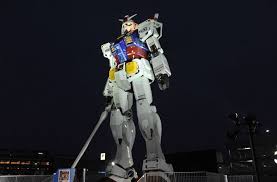
Breaking News
 Senate Unanimously Approves Bill To Release Epstein Files
Senate Unanimously Approves Bill To Release Epstein Files
 Former Bioweapons Contractor: "We Weaponized Ticks to Create a Poor Man's Nuke"
Former Bioweapons Contractor: "We Weaponized Ticks to Create a Poor Man's Nuke"
 The Hood Has MELTDOWN As Massive Overhaul To SNAP & Food Stamps Will End The Massive Grift!
The Hood Has MELTDOWN As Massive Overhaul To SNAP & Food Stamps Will End The Massive Grift!
 CNN Just Noticed Something New About White People, And They're Losing It!
CNN Just Noticed Something New About White People, And They're Losing It!
Top Tech News
 New Gel Regrows Dental Enamel–Which Humans Cannot Do–and Could Revolutionize Tooth Care
New Gel Regrows Dental Enamel–Which Humans Cannot Do–and Could Revolutionize Tooth Care
 Researchers want to drop lab grown brains into video games
Researchers want to drop lab grown brains into video games
 Scientists achieve breakthrough in Quantum satellite uplink
Scientists achieve breakthrough in Quantum satellite uplink
 Blue Origin New Glenn 2 Next Launch and How Many Launches in 2026 and 2027
Blue Origin New Glenn 2 Next Launch and How Many Launches in 2026 and 2027
 China's thorium reactor aims to fuse power and parity
China's thorium reactor aims to fuse power and parity
 Ancient way to create penicillin, a medicine from ancient era
Ancient way to create penicillin, a medicine from ancient era
 Goodbye, Cavities? Scientists Just Found a Way to Regrow Tooth Enamel
Goodbye, Cavities? Scientists Just Found a Way to Regrow Tooth Enamel
 Scientists Say They've Figured Out How to Transcribe Your Thoughts From an MRI Scan
Scientists Say They've Figured Out How to Transcribe Your Thoughts From an MRI Scan
 Calling Dr. Grok. Can AI Do Better than Your Primary Physician?
Calling Dr. Grok. Can AI Do Better than Your Primary Physician?
Japan is building a 60-foot-tall, walking Gundam robot

First going to air in 1979, Yoshiyuki Tomino's Gundam series has left an indelible mark on Japanese culture and the world of animation. Its giant, samurai-influenced, sword-fighting mecha robots have launched nearly 50 official TV series and movies, and inspired countless others. Transformers, Pacific Rim, Real Steel, Voltron, MegaBots, anything with a big robot in it owes some debt to Gundam, indeed, even the Master Chief's armor in the Halo series of video games. It's impact is so great, Gundam is currently ranked as the 14th highest-grossing media franchise of all time.
Japan in particular loves these big fellas. Sales of miniature figurines from the official Bandai Namco company itself were approaching half a billion back in 2015. And there's been no shortage of full size, 18-meter-tall (60-ft) recreations either.

 Unbanked In A Connected World
Unbanked In A Connected World

